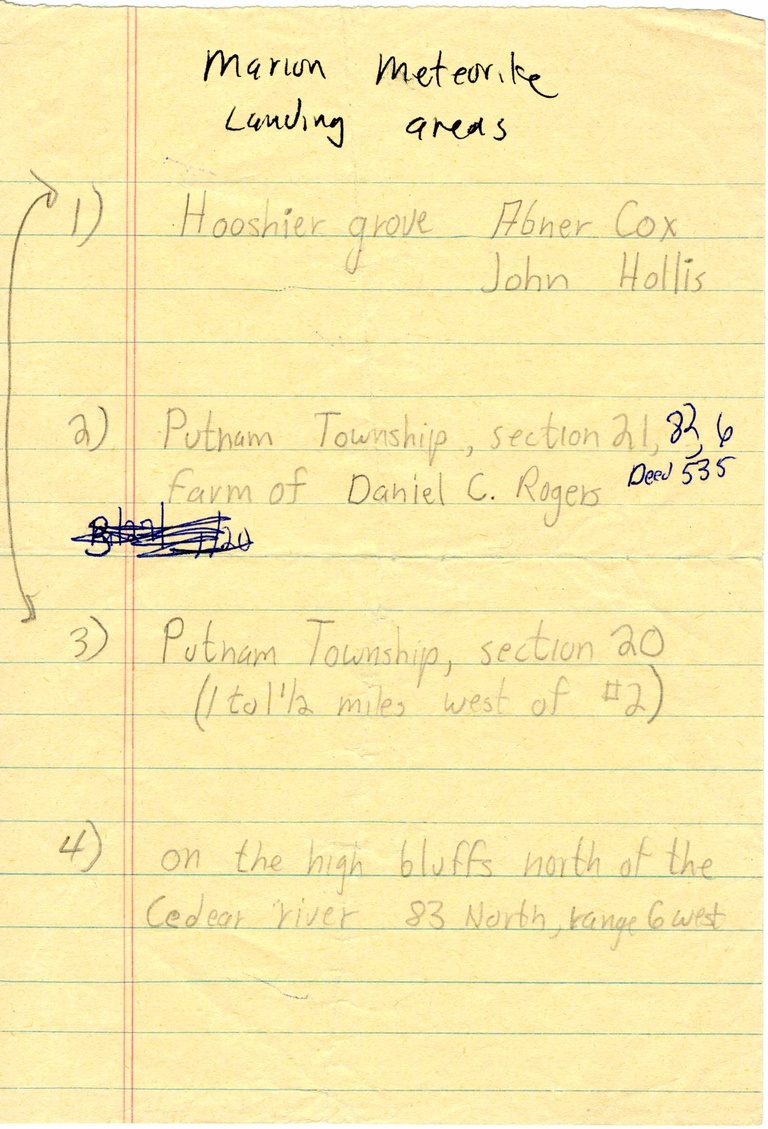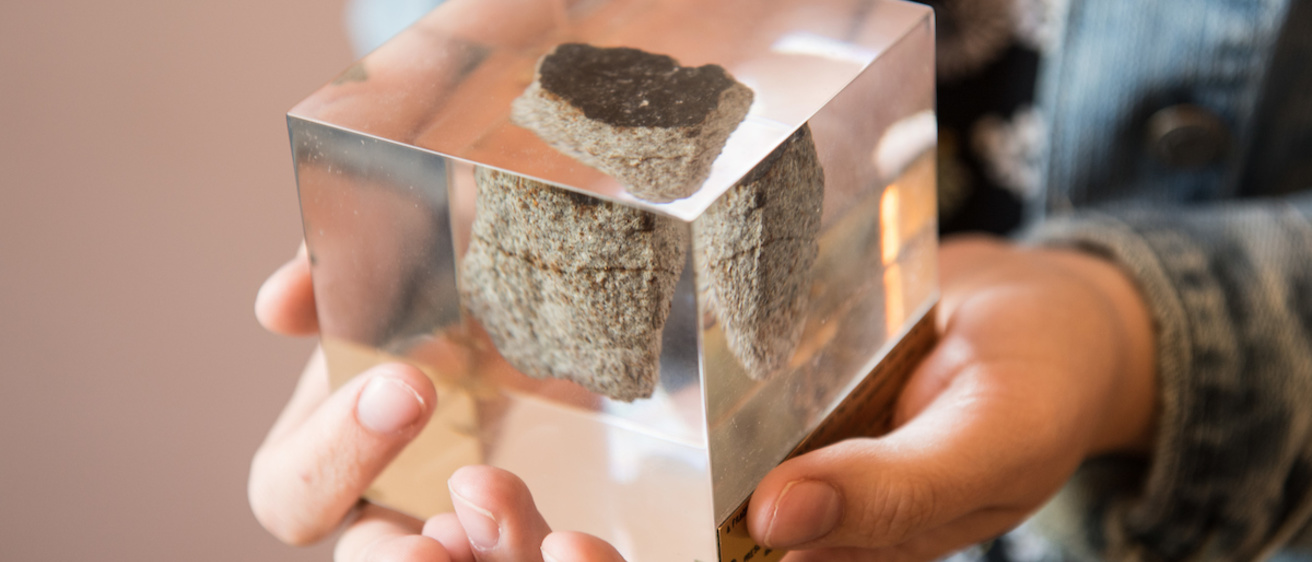
Editor’s note: The Old Gold series provides a look at University of Iowa history and tradition through materials housed in University Archives, Department of Special Collections, University of Iowa Libraries.
Much of the midsection of the U.S. is preparing for a first-in-decades total eclipse of the sun on Aug. 21. The path of totality will arc from Oregon to South Carolina, including a swath across Missouri, our neighbor to the south. Nearly all of Iowa will experience 90 percent or greater totality. Old Gold, who likes to look up at the sky often, can’t wait. He also reminds everyone not to look directly at the sun to avoid damaging their eyes.
But the upcoming event reminds Old Gold of another astronomical episode that occurred 170 years ago—one that was more unpredictable and unrelated to alignment, but celestial nonetheless.
Perhaps it was an omen. Only hours after the first General Assembly of the State of Iowa voted to establish the State University of Iowa, a meteorite crashed to the ground in rural Linn County near the Cedar River, less than 30 miles from Iowa City, the then capital of Iowa. The blast was heard throughout the countryside and attracted considerable attention at the time.
The American Journal of Science and Arts (Vol. IV, November 1847) duly noted the event as follows:
“[A]n aerolite fell at 3 o’clock in the afternoon of the 25th day of February, 1847, within seventy-five yards of the house of Daniel Rogers, nine miles due south of Marion, Iowa. The ground was covered with snow at the time it fell. Mr. Rogers heard a loud explosion in the air, and immediately ran to his door. He heard the stone and several others whiz through the air, and strike the ground, and saw the snow and dirt fly where this stone struck. The weight of the stone before it was broken was forty-two pounds. … The explosion was heard distinctly by one of the surveyors who was engaged on the survey of the public lands, forty miles distant from Mr. Rogers’ house.”

Noteworthy as they were, the coincidence of the Feb. 25, 1847, events—legislative and astrophysical—went unnoticed for decades until an account appeared in the February 1937 issue of The Palimpsest, a publication of the State Historical Society of Iowa. However, nearly four more decades would pass before there was renewed interest. In 1974, University of Iowa graduate student Mark Pesses, now principal scientist at Ball Aerospace, investigated the site of the impact and identified fragments of the meteorite that had been passed on to C.C. Wylie (1886–1976), a longtime professor of astronomy at the UI.
Pesses’ work resulted in the installation of a display of a large fragment at the Old Capitol Museum in 1976, a display that remains today. In addition, portions of the mass are housed at Arizona State University’s Center for Meteorite Studies, and a small fragment has been preserved at Coe College in Cedar Rapids, Iowa.
Old Gold’s high school teams from Charles City, Iowa, are called the Comets. If the story of the Marion Meteorite had not fallen into obscurity by the late 19th century, perhaps the teams now known as the University of Iowa Hawkeyes would have taken on a different name. Who knows?
